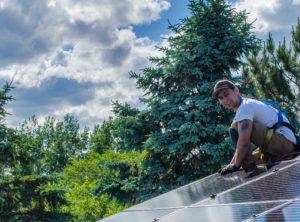08 Oct Can I install a solar system now and add batteries in the future?
 Did you know that Maine ranks #49 out of 50 in power grid reliability, according to McKinsey & Company? Advances in battery technology, however, are changing the energy landscape. As solar battery storage capabilities increase and prices fall, Maine home and business owners have more options than ever before for backup power during grid outages.
Did you know that Maine ranks #49 out of 50 in power grid reliability, according to McKinsey & Company? Advances in battery technology, however, are changing the energy landscape. As solar battery storage capabilities increase and prices fall, Maine home and business owners have more options than ever before for backup power during grid outages.
Lithium-ion batteries, including the Tesla Powerwall, are still relatively expensive at this time. Some people are willing to pay for battery storage, especially if outages are particularly troublesome or costly. Other Sundog Solar customers are preparing by installing a solar system with future storage capabilities. Lithium-ion batteries have fallen dramatically in price and increased in capabilities, and this trend is likely to continue. If the solar system we design is storage ready, batteries can be added later more easily.
If the solar system isn’t designed to be battery ready, it is more costly to add battery storage in the future. This is because the existing solar panels can be used but the system requires replacing or adding additional components. If you are going solar now and want the option of future battery storage, it is helpful to install a solar system that can accommodate a battery in the future.
Upgrading an existing solar system to have battery storage
If a solar system is not designed to be battery ready and storage capabilities are added in the future, it is more costly. Either the solar inverter needs to be replaced or an additional inverter is added for an AC-coupled solution. The latter option does cause a reduction in efficiency but has a lower upfront cost than completely replacing the inverter.
Installing a battery-ready solar system
A solar inverter in a solar system that is connected to the utility grid converts DC power from the solar panels into AC current for use in the home or business. If a solar system has energy storage capabilities, the solar system inverter needs the ability to convert the electricity back to DC power so it can be stored in the battery. Many inverters can perform the first task but not the second.
To prepare for future battery storage, the Sundog Solar team recommends installing an inverter with battery storage capabilities. The solar system would then operate only as a grid-tied solar system without storage capabilities until batteries and additional components were added. In addition to lowering the future equipment costs, the labor expenses for adding energy storage are likely lower because it is a simpler upgrade.


